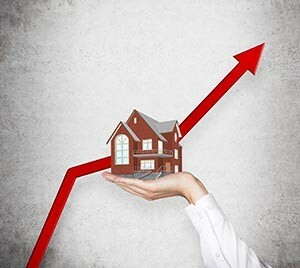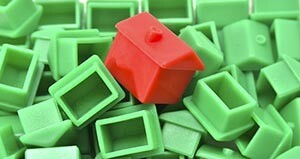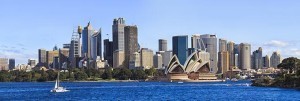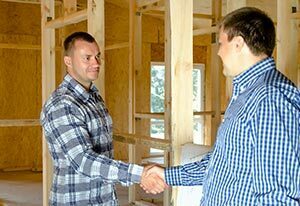 Has the Sydney property market run its course? Are we nearing a property bust? For some time now, the doomsayers have been warning of a bust at the top of their voices. They feel that the property market in the Harbour City does not have anything more to offer. Prices are at their peak value and the Sydney property bubble may burst any time now. There is a saying that goes, “intelligence is full of doubts and fools are always cocksure”. When it comes to real estate, it is good to travel the middle path. So, without sounding either too sure or too doubtful, let me dissect the idea of the impending property boom.
Has the Sydney property market run its course? Are we nearing a property bust? For some time now, the doomsayers have been warning of a bust at the top of their voices. They feel that the property market in the Harbour City does not have anything more to offer. Prices are at their peak value and the Sydney property bubble may burst any time now. There is a saying that goes, “intelligence is full of doubts and fools are always cocksure”. When it comes to real estate, it is good to travel the middle path. So, without sounding either too sure or too doubtful, let me dissect the idea of the impending property boom.
I am about to share a few pointers that I think are crucial to understanding the present property market scene in Sydney and I will also ponder over that one special aspect which can be the single biggest determining factor.
Sydney property bubble – why it may or may not have arrived
People are so busy talking about the property bubble, and the term has certainly entered public consciousness. Because prices of properties have seen a big upward swing and are sitting at very high levels, we have begun to relate it with the “bursting of the property bubble”. However, it may be wise to examine the reasons for the price hike. There may be many factors at play and perhaps none corresponding to a property bubble.
Property bubble of Australia must be read in terms of real value growth
 Let us start with the “property prices versus average household income” debate. It is true that the ratio between prices and average household income is rising. It is sitting at never-before seen levels. However, let me ask you something. Does it not happen in places where the market, for one reason or another, has languished for a great deal of time, and its sudden rebound has taken prices to the top? Growth of household income is an economic factor behind which the forces at work are quite separate from the forces which prevail in the property market. Value growth in real estate does not necessarily come with equivalent growth in household income. In a period when dwelling prices rose by 17%, wages grew by only 2.3%. This gap is bound to add to the perception of rising prices.
Let us start with the “property prices versus average household income” debate. It is true that the ratio between prices and average household income is rising. It is sitting at never-before seen levels. However, let me ask you something. Does it not happen in places where the market, for one reason or another, has languished for a great deal of time, and its sudden rebound has taken prices to the top? Growth of household income is an economic factor behind which the forces at work are quite separate from the forces which prevail in the property market. Value growth in real estate does not necessarily come with equivalent growth in household income. In a period when dwelling prices rose by 17%, wages grew by only 2.3%. This gap is bound to add to the perception of rising prices.
Sydney property market – a possible fault in its analysis
Speaking of perception, let us not suffer the illusion that prices have become way too high. This brings me to another point worth mulling over: real value growth and the nominal value growth. At some point, you must have heard your parents or elders say, “property was really cheap in our times, it was almost selling for free” or something like, “what we could buy for $50,000, you guys cannot even purchase for $1 million”. While I won’t say they are lying, there is something more to this than meets the eye. Let me introduce the concept of real growth and nominal growth here.
If we take the growth in property prices into the picture without first analysing how the household income has grown over the same period of time, we will be left with only the nominal growth. Such faulty study will lend credibility to what our parents talk about. You will really feel cheated to be living in times when properties have become so costly.
However, if you do some inflation-adjusted research you, will figure out that the prices have not shot through the ceiling at all simply because your purchasing power today is way above the purchasing power your parents had.
The error they are making is that they are being vocal about properties having become 20 times costlier since their time, ignoring the fact that household income has also shot up 15 times (a hypothetical figure, for sure, but it pretty much drives the point home).
I have now been hearing for some time that issues of affordability are creeping into the Sydney property market. This point has some weight because it has the backing of empirical evidence. This said, evidence only suggests a possible lack of affordability. It does not ponder over the reasons behind it.
Sydney house prices – the core question of affordability
 While there is the question of affordability hanging over us in certain pockets of our real estate, the reason is not entirely the property market boom. Had it been so, we would have gone bust some time ago, given the phenomenal value growth witnessed by Sydney. The major reason for the question of affordability, if any, arises because of a housing shortage. Doomsayers call it the chronic housing shortage. I personally don’t like adding the word ‘chronic’ or ‘terminal’ to it.
While there is the question of affordability hanging over us in certain pockets of our real estate, the reason is not entirely the property market boom. Had it been so, we would have gone bust some time ago, given the phenomenal value growth witnessed by Sydney. The major reason for the question of affordability, if any, arises because of a housing shortage. Doomsayers call it the chronic housing shortage. I personally don’t like adding the word ‘chronic’ or ‘terminal’ to it.
It is expected that we will be roughly 200,000 homes short by the year 2025. Naturally, if that would be the case, the lack of dwellings can easily cause a massive gap between demand and supply thus raising prices a great deal. Such gaps, despite the best intentions of the government, cannot be filled within a particular growth cycle of the property market. For instance, even if housing approvals increase at a fantastic rate (approvals for apartments and detached housing are both rising at a very smart rate; 90% approvals within a 40-day framework is a great idea), enough homes cannot be built in the coming year or so.
This means that in its homestretch, this property cycle may have to cope with questions of housing shortage. When this shortage escalates the price further, we will know in our hearts that population growth had caused it and not a property bubble.
Australian housing bubble – will it burst under the weight of population growth?
 There has been a population explosion in recent times. This has been due to two specific reasons. First is the increase in average life expectancy, which is essentially a triumph of medical science and living standards. Another point is the pace of net interstate migration.
There has been a population explosion in recent times. This has been due to two specific reasons. First is the increase in average life expectancy, which is essentially a triumph of medical science and living standards. Another point is the pace of net interstate migration.
Sydney is only going to have its hands fuller in coming times because it is clear that people migrate towards “greener pastures” where they see ample opportunities coming their way; more people migrating means a higher and faster rate of population increase. So for a reasonably long span of time, we will see more people moving into Sydney (demographic and gentrification trends proves this point) and because the rate at which they move cannot be met by the rate of dwelling construction, we will have the housing shortage we have been talking about. If price rises because of lack of housing, it will, and a property bubble cannot be blamed for it.
House prices in Sydney are at their elastic limit, aren’t they?
 There is a certain sector– I would say experts included–who feel that housing prices are at their peak and that the momentum cannot hold. Now many of us would have noticed ink spreading on a blotting paper. If not, we would certainly have inflated a balloon some time or the other in our lives. What is common to both these cases?
There is a certain sector– I would say experts included–who feel that housing prices are at their peak and that the momentum cannot hold. Now many of us would have noticed ink spreading on a blotting paper. If not, we would certainly have inflated a balloon some time or the other in our lives. What is common to both these cases?
If you look at it more deeply, you will figure out that the ink spreads very fast in the beginning but towards the end, its speed comes down a great deal. Similarly, a balloon expands rapidly towards the beginning but the pace of expansion gradually comes down when it nears its elastic limit. So, what we may be facing in the near future in Sydney or Melbourne is not a property market bust but a mellowing down in prices. We have to first understand the way economy reacts to a place’s real estate and vice versa.
Current Sydney property prices are an extension of GFC days
Let us go back into the past a bit. We were really at a loss for words during the Global Financial Crisis. Nothing was working out and the Australian real estate in general and the Sydney real estate in particular were clearly at their rock bottom.
The number of doomsayers had increased and one felt they would be in their jobs permanently. The tide turned–first in tiny phases and then in very big leaps– it did really turn for our property market. Prices rose and the ripple effect ensured that the market buoyancy led to boosted consumer sentiment (indexes tracked it) and thus led to more purchases and a further rise in prices. You can work the chain reaction out for yourself.
We had been languishing for long so what we took for a big price hike was actually only the process of market correction. Our prices looked so good only because they had succeeded plateau prices. It is like when you are unemployed for long, even a salary of $100 a week looks really big but set against the average industry standard, can it really be called big? Think about it!
Many things fell in the right place and we got ourselves a healthy real estate, moving fast through the sphere of its growth cycle. Consumer sentiment, government initiatives, sound economic fundamentals saw to the success of our moves. And it all converged beautifully! Think of the interest rates. They had been kept pretty low for a reason and every time one thought they could not get lower, the RBA slashed them down further by 25 basis points.
Why was it possible in the first place? Only because the slashing did not create any kind of inflationary pressure. To come one step further backward, it was only possible to be free of the fear of inflation because Australia was sailing pretty close to its economic fundamentals. Point worth keeping in mind though: time has now come for a hike in interest rates.
Sydney property bubble to burst anytime- far from it, it will deflate very slowly
Our fears are misplaced. Even I do not expect the property market to continue doing as well as it has done over the last few years, but that is because we have moved into a different phase of our growth cycle. We now need to consolidate and be prepared to see our value growth come down. It is pretty natural, but it wouldn’t automatically mean a bursting of the property bubble.
This idea needs to be elaborated. In my opinion, ours won’t be a case of a bubble that explodes under its own pressure. We won’t come out as “bursting at the seams”. Our story won’t be of a city where property prices rise so high that they go bust overnight. I have a different vision: I think that several factors will collide to bring down growth from here and our market, having passed through all the other stages of a property cycle, will finally come to rest, deflating slowly like a beach-ball (and I prefer this vision).
I have talked about how the property scene has unfolded so far. Put another way, I have tried to bring you a composite picture of what may have made our case a close one to a “property bubble”. Now let me share with you what I think is likely to happen. Let’s take a look at the economic indicators.
Australian economy 2015 – current indicators
 We know there is a definite link between supply and price point. When supply and demand both grow, prices rise. I am afraid I have a view diametrically opposite to what has been held presently. For me, the reverse case will prevail. We will have a case of oversupply and dwindling consumer interest (the reason why I don’t approve of the vision of a bubble-burst but a deflating beach-ball).
We know there is a definite link between supply and price point. When supply and demand both grow, prices rise. I am afraid I have a view diametrically opposite to what has been held presently. For me, the reverse case will prevail. We will have a case of oversupply and dwindling consumer interest (the reason why I don’t approve of the vision of a bubble-burst but a deflating beach-ball).
Australian housing market – crucial factors at play
By the year 2019, we will have as many as 720,000 homes built in Australia. A fair chunk–more than half of it to be precise–will come from Sydney and Melbourne. We have had a case where price rise led to increased investor interest. This translated into increased developer interest. In a scenario where everyone wanted a share of the pie and pushes turned to shoves, higher demand and higher supply led to price escalation.
Remember, all this was helped along the way by a massive dip in interest rates. The rates have come down as much as 5%- from 7% to 2% over the last decade. So, how will the status quo change when 720,000 dwellings are added to the picture of our real estate?
No talk of property bubble in Sydney can be complete without this ‘opposite’ view
Where there had been a forecast of a shortfall to the tune of 140,000 dwellings, we may have something like a surplus of 75,000 homes. It will be strange to note that rising construction activity, which is usually a true reflection of a growing economy, will present an opposite picture. The economy is already stalling, and fast. The economy has grown by 0.2% over the June Quarter. Only 5 times in the last 60 Quarters has the growth been as bad and each time in the past, there were worthy explanations.
Perception of Sydney housing bubble is related to the ‘myth’ of population growth
I have shared with you how the population exploded in our country and Sydney faced it in no less uncertain terms. This said, population growth may stall, too (I know I am pushing for a completely different idea but I have stats to back it up). The national population only added 1.4% to its kitty in 2014, the slowest it has grown in the last 8 years.
We cannot overstate the possible impact of investor lending and this, my friends, is going to slow down considerably, too. Already, the APRA regulations have tightened the screws and it has brought Sydney’s value growth down a long way.
The vision of the slowly deflating beach ball keeps occurring to me but remember, the beach ball knows it has had its day in the sun and is retiring in contentment. So, to sum it up in one sentence, Sydney’s property bubble won’t burst, but it is made of rock no more.
Sydney property market – a tip for investors
If I had to offer one tip to investors, it would be to follow the buy-and-hold strategy. Sydney property market goes bust, they can keep holding and make much more when we hit the peak of another growth cycle in about a decade (or much quicker). This then is still a very good time to buy your properties, forget what the doomsayers rant.
I agree that it is not all that easy to find a great property at a reasonable price and somewhere down the line, the help of a professional, a seasoned buyer’s agent is crucial. To select a property that has maximum factors in its favour is not an easy job. The eye for such a selection comes with experience. I will be more than glad to give you a hand if you have a property purchase in mind. You can contact me today.











